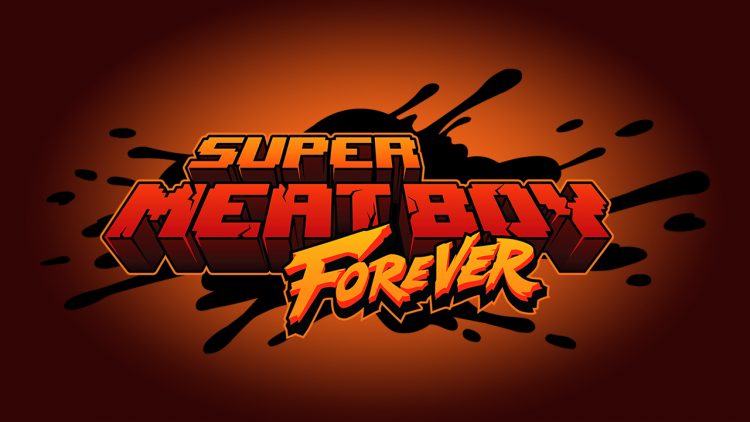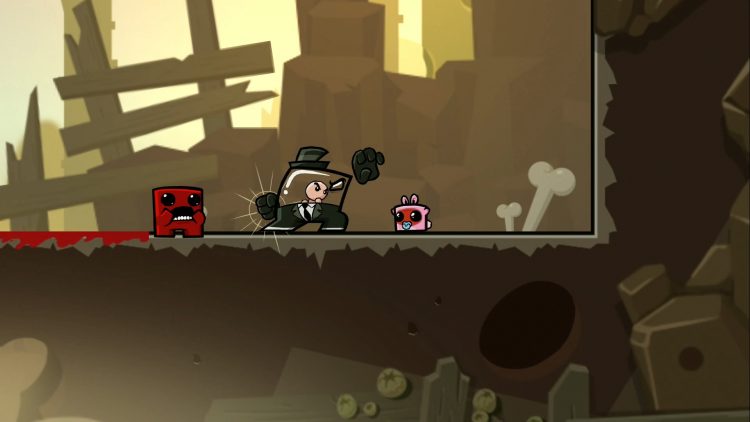I wasn’t sure what to think when I first read about Super Meat Boy Forever. I loved the original game, but its sequel sounded like it was going to be something entirely different. It was billed as a runner (but not an endless runner), and that initially gave me a ‘mobile game’ vibe. Gone were the directional controls traditionally shared by platformers, with input reduced to two buttons. Levels would be procedurally generated by stitching together premade chunks of varying difficulties, replacing the fully-formed and polished courses of the previous game. Each of these things sounded like they could be out of place in a Super Meat Boy game, so having them all together in the same one might have spelled disaster. As it turns out, it was actually a recipe for success.
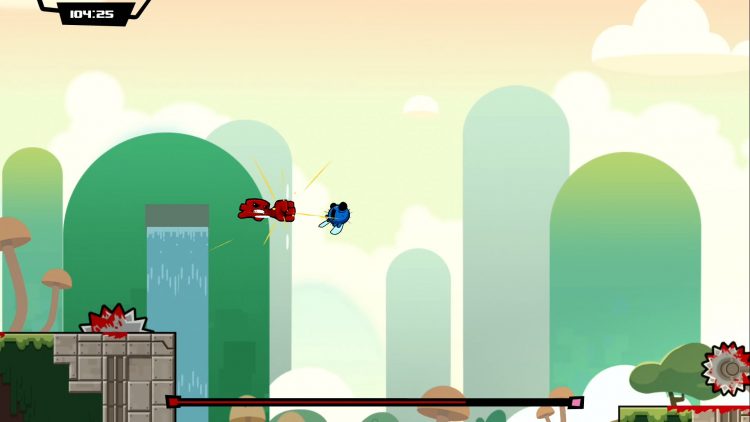
We had a chance to sit down with Tommy Refenes, co-founder of Team Meat and programmer/designer for the Super Meat Boy games, at PAX East 2018. He recalled that getting onto mobile devices had suddenly become the new craze back in 2011, but the team was busy at the time with releasing the original Super Meat Boy on consoles and PC/Mac/Linux. Fans continued to ask afterward about a mobile version of it, but he didn’t think it was the right medium given how poorly the controls would translate. He eventually explored the idea of making a runner-style game in 2014, and designed it around utilizing only two actions: jumping and diving. Although the prototype levels played well, he had to shelve the idea. Fast forward to 2017, and Refenes wanted to make a new Super Meat Boy game. He didn’t want to just reuse the same formula from the first title and simply pack it with harder levels just for the sake of doing so, though. He thought that a true sequel should have new mechanics and expand beyond the original, so it seemed like a perfect opportunity to bring back his runner concept. Thus, Super Meat Boy Forever was born.
Refenes described it as “a harder game overall, but much more accessible”. The simplified controls allow players to jump, which had been essential in the original game, and dive, which was a new move introduced to retain mobility since full directional control had been eliminated. Meat Boy can now also attack with a punch, and the beginning of his dives and slides begin with a punch as well. What Refenes found was that this new control scheme allowed him to retain the feeling of the first game while opening it up to a wider audience, as the two button interface made it so that almost anyone could play Super Meat Boy Forever. His wife played it for two hours, then told him that she liked not having to hold down multiple buttons to move and run. Refenes himself had played it during a flight where he only had one hand free (needing his other to hold a drink), and was able to control Meat Boy well enough to beat the more difficult stages of the Dark World. But while it was easier to control, it was by no means easier to conquer.
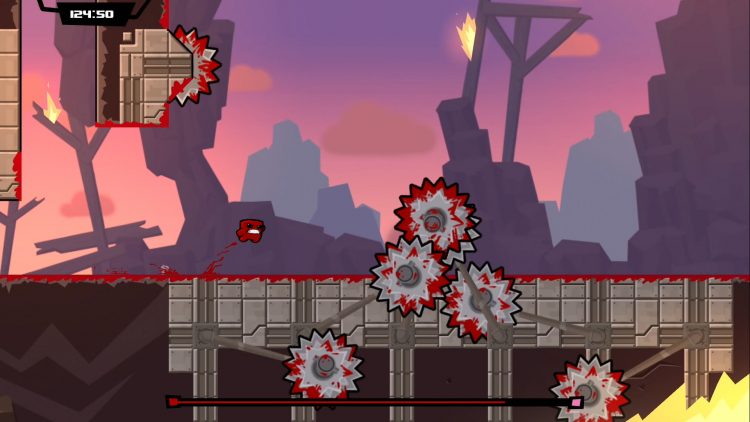
Meat Boy runs nonstop, and can change directions by wall jumping. Players must combine jumps, wall jumps, punches (which also serve as a brief dash), dives and slides with precision in order to reach the end of each course. I told Refenes that the basic concept of the game had reminded me of Super Mario Run, and asked for his thoughts on it. He said that when Nintendo released it back in 2016, he was worried that he’d “missed the boat”. On paper, it sounded very similar to the mobile-compatible Meat Boy game he’d shelved two years prior; Mario runs nonstop and can wall jump (but is unable to change directions, and will always run to the right), and the game’s controls are simple enough that it can be played one-handed. Once he actually tried it, though, he found that what Nintendo had created was a mobile game that featured Mario, and not the other way around (which was also my take on it). Levels and gameplay weren’t typical Mario fare, and were designed more to accommodate the platform than provide a full Mario experience. His game, on the other hand, was a true Meat Boy experience that happened to be compatible with the input capabilities of most mobile devices. He said that after playing Super Mario Run, he thought “the boat’s still here.”
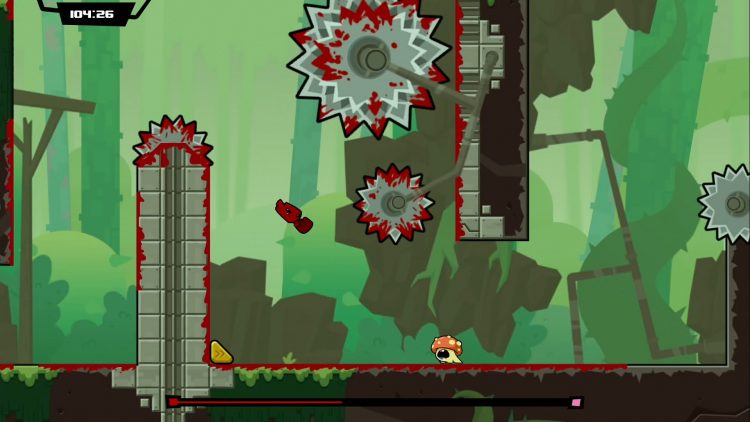
After going hands-on with the game at PAX East 2018, I am happy to confirm that the game lives up to what a true Meat Boy title should be, even with all of the changes. Having the levels be generated by combining premade sections allows for the game to create varying ramps in difficulty. Easier chunks can lead into more difficult chunks, or harder chunks can lead to extremely hard chunks if you selected a higher overall difficulty setting before starting the stage. The Green Hills world that I played tasked me with jumping between and sliding under giant saw blades set at varying heights among horizontal and vertical paths, with some that eventually broke free and chased me across crumbling block bridges. Several of the sections required wall jumping to backtrack, then wall jumping again to loop over an area while dodging blades multiple times until I could pass. Upon dying, Meat Boy would respawn at the start of the most recent section of the level, bringing me straight back into the action just as the first game had. We also saw levels set in what appeared to be a world similar to the Hospital from the first game, with giant piles of syringes lining floors and walls. Previously, touching syringes was an instant death for Meat Boy, but this time around he has a damage meter that quickly fills while he’s running through these piles. Hopping out of them will reset the damage meter, so players must manage their time inside the obstacles and pick their jumps carefully.
The visuals for Super Meat Boy Forever have received a healthy upgrade. In place or the first game’s small, blocky sprites are larger, hand-drawn assets that retain the appearance of Meat Boy, Meat Girl, and Dr. Fetus from the first game’s cutscenes and promotional art. Refenes told us that he has animators from Adult Swim working on the game, and that he was trying to utilize them as fully as possible. Super Meat Boy Forever‘s cutscenes are fluidly animated, and are vastly superior to the original’s Flash-style cinematics. In honor of our site’s namesake, Refenes even treated me to a peek at a cutscene from later in the game involving the Meat Boy version of Shagohod, which was simply awesome.
Super Meat Boy Forever is everything a sequel really should be. It captured everything about its predecessor necessary to create the right experience for the series, from its potential to be brutally challenging to its humor. Most importantly, was just a lot of fun to play. I’m looking forward to picking it up when it releases on consoles and PC later this year. Keep an eye on the official Super Meat Boy site for updates regarding its release.


